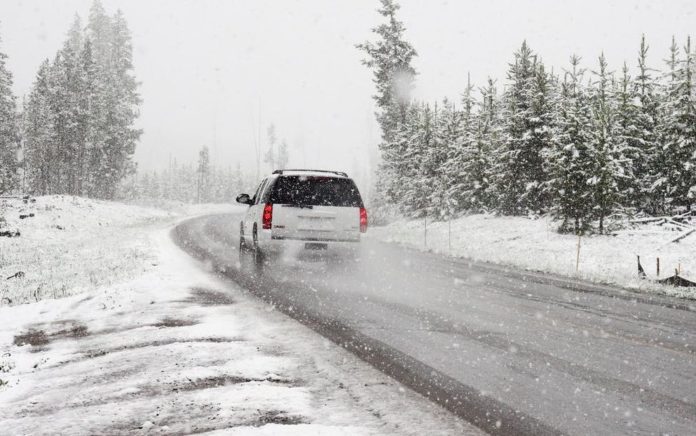Winter driving can be unnerving. In addition to colder temperatures, slick, icy surfaces, and all-around unpredictable terrain, drivers are also surrounded by other motorists who often lack the confidence and skills for navigating the winter roads safely. Fortunately, there are a few things that you can do to limit the risks of winter driving and avoid collisions.
Get Your Vehicle Ready for Winter Driving Conditions
There’s never a more important time to have a set of high-quality tires that have been properly pressurized and balanced. If the treads on your tires are worn or if your tires are showing other signs of excessive wear, have them swapped out. Get an end-to-end inspection and tune-up that includes special attention to the brakes.
Depending upon your local weather and the wintertime challenges that this entails, you should additionally switch to either all-weather tires or winter tires as needed. Your wintertime auto maintenance should also include:
- A wiper blade inspection
- Switching from standard wiper fluid to wiper-fluid with antifreeze additives
- A coolant check
- Inspection of all belts and hoses
Keep in mind that dramatic changes in outside temperatures invariably lead to the expansion and contraction of many automotive materials. This makes excessively worn parts more likely to fail when temperature fluctuations are at their most extreme.
Good vehicle maintenance at this time of the year won’t just ensure better traction, handling, and overall performance; it can also limit the likelihood of you becoming stranded by the side of the road.
Plan Your Trips According to Weather Conditions
Always check the weather before heading out. This will give you the opportunity to cancel or delay unnecessary trips when any major weather event is expected. It will also allow you to plan your route accordingly. Getting most of your driving done between the mid-morning hours and the early evening can help you avoid excessively slick, icy roads.
Inspect and Clear Your Vehicle Before Taking Off
Perform a thorough inspection of your vehicle before taking off. Check to ensure that all of your tires are inflated and that all of your lights are working. Clean off all snow accumulations at the roof of your car, the trunk, the hood, and the windshield.
If snow is left in place, these build-ups can shift unexpectedly and compromise visibility. They can also prove hazardous to other motorists. You should also take the time to thoroughly defrost your windows before pulling out so that you can see the road clearly from all sides.
Take Your Time
Decrease your speeds in the wintertime to ensure plenty of stopping distance. It’s better to be late to your destination than to experience an injury accident as a result of fast driving. Schedule your departures slightly earlier than normal to give yourself more time and greater peace of mind. If your vehicle ever skids, this means that you’re likely driving too fast for the current road conditions.
Be Prepared for the Worst
Even when you’ve taken every possible precaution, accidents can still happen. Make sure that you have road flares, reflective triangles, a first aid kit, and a warm blanket on hand. Review the most important steps to take following an accident:
- Make sure your vehicle is in park and turned off
- Set up reflective triangles and flares to notify other drivers that you’ve stopped
- Verify that everyone in the vehicle is safe
- Exchange insurance information in a safe location
- Get the names and contact information of eyewitnesses
- File an official police report
- Never admit fault
According to the Kryder Law personal injury lawyers, you should completely avoid traveling in the worst weather whenever possible. If you ever travel into remote areas, your stored collection of wintertime emergency supplies may need to be a bit more comprehensive. Having water, food, and cold weather gear on hand will ensure that everyone in the vehicle remains comfortable and safe until help arrives.
Avoid Sharp, Abrupt Movements and Learn Skid Recovery
Skillful winter driving is about far more than slowing your speeds and increasing your stopping distance. If you find yourself entering into a skid or hydroplaning, making sharp, abrupt movements is the worst thing that you can do. Avoid jamming on the brakes when you feel your car going out of control and simply ease off the accelerator instead.
Never yank on the steering wheel to correct your course. Tap your brakes gently as needed and try turning into spins rather than attempting to forcibly steer out of them. Slow and deliberate movements will help you regain control of your car much faster.
Preparedness can make winter driving far less daunting and dangerous. With the tips above, you can limit your risk of collisions. Moreover, should the unexpected ever occur, you’ll have the right tools and strategies for mitigating any potential damages and losses.





























































